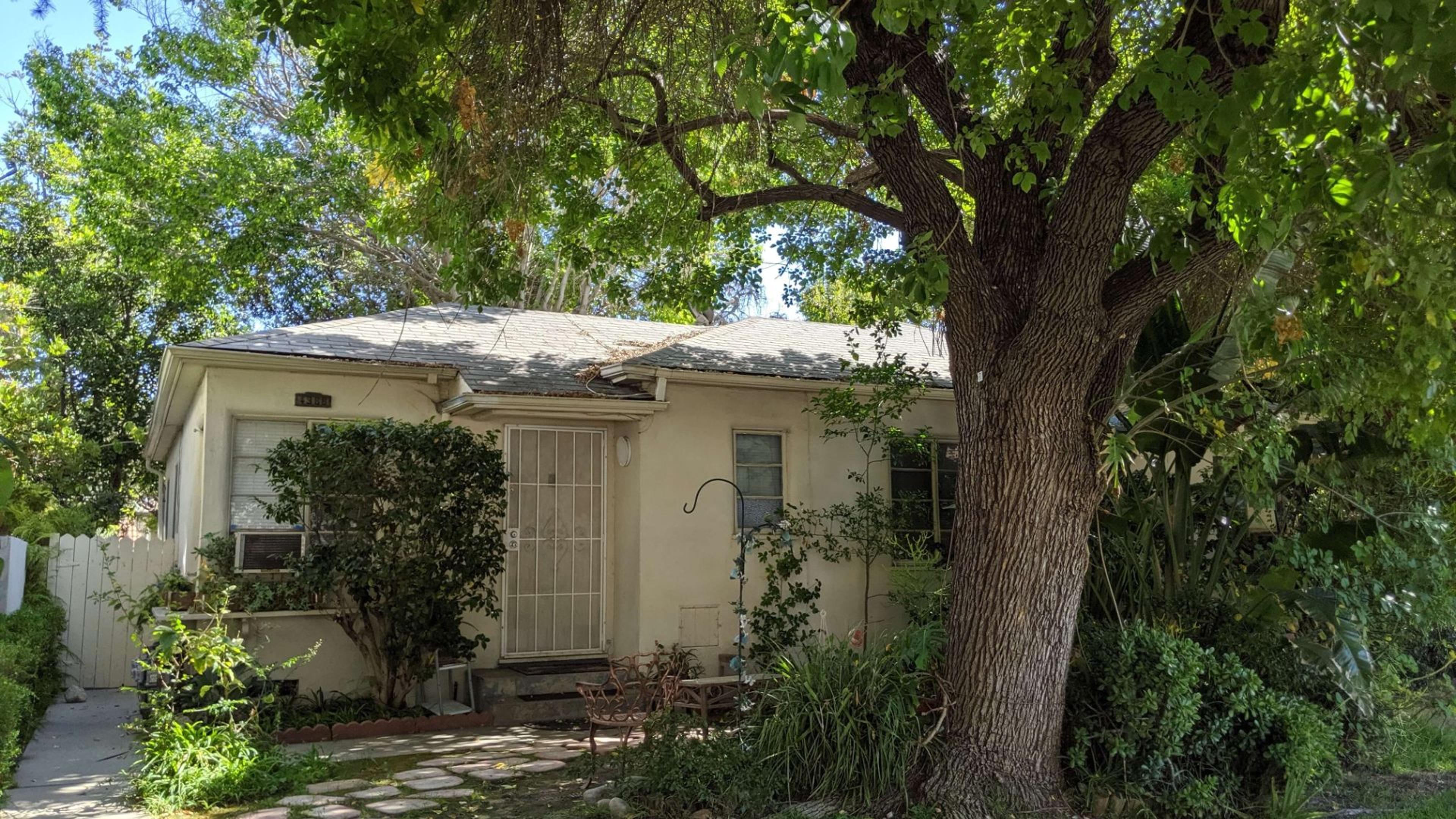Raise a glass to classic Valley living—low slung, two story, lots of trees, predominantly Postwar, i.e., the vaunted, vilified suburban dream.
For example: the homes, top, other side of the alley, are from 1936 and 1940; along Cahuenga, hiding under the foliage, the houses are 1949, 1949 and 1946, and then at bottom right, is 10555 Bloomfield, built in 1941.
She’s a little hard to see from the street, what with all the trees and bougainvillea.
Still, with a little maneuvering of the Googlemobile, we can peek in:
The house was designed for engineer Floyd Martin Boes by architect A. Godfrey Bailey, who designed these and all of this.
You knew where this was going:
Of course, all of that air-cleaning flora will be torn out and dumpster’d too, especially since the fifty-seven-unit structure gets to reduce its open space considerably and build to the edges of the lot. But, somewhere in the subterranean garage the developer is adding room for bicycles! This project is green!
Update, 2021: since being demo-fenced, the foliage has been cut back enough to reveal 4372 Cahuenga, built in 1946, also going bye-bye
The social engineers insist it’s green because, despite the fact that with this density comes, say, overburdened resources, emissions from outflow stacks, the Urban Heat Island, cars sitting in traffic, and so forth (and no, those sixty-nine parking spaces filled with Tolucan EVs aren’t fooling anyone, rather, they’ll say it’s green because no-one _deserves_ a single-family home. Trust me, I don’t follow the logic either, but then also I don’t get how they’ll put fifty-seven units on the site of a single family home.
I’ll give ’em this, though. If we estimate 100 people live in the new complex, that’s on average 3,500lbs of trash for the trash trucks to pick up each week. At least they won’t have any green bins to empty.
About Nathan Marsak
NATHAN MARSAK says: “I came to praise Los Angeles, not to bury her. And yet developers, City Hall and social reformers work in concert to effect wholesale demolition, removing the human scale of my town, tossing its charm into a landfill. The least I can do is memorialize in real time those places worth noting, as they slide inexorably into memory. In college I studied under Banham. I learned to love Los Angeles via Reyner’s teachings (and came to abjure Mike Davis and his lurid, fanciful, laughably-researched assertions). In grad school I focused on visionary urbanism and technological utopianism—so while some may find the premise of preserving communities so much ill-considered reactionary twaddle, at least I have a background in the other side. Anyway, I moved to Los Angeles, and began to document. I drove about shooting neon signs. I put endless miles across the Plains of Id on the old Packard as part of the 1947project; when Kim Cooper blogged about some bad lunch meat in Compton, I drove down to there to check on the scene of the crime (never via freeway—you can’t really learn Los Angeles unless you study her from the surface streets). But in short order one landmark after another disappeared. Few demolitions are as contentious or high profile as the Ambassador or Parker Center; rather, it is all the little houses and commercial buildings the social engineers are desperate to destroy in the name of the Greater Good. The fabric of our city is woven together by communities and neighborhoods who no longer have a say in their zoning or planning so it’s important to shine a light on these vanishing treasures, now, before the remarkable character of our city is wiped away like a stain from a countertop. (But Nathan, you say, it’s just this one house—no, it isn’t. Principiis obsta, finem respice.) And who knows, one might even be saved. Excelsior!””
Nathan’s blogs are: Bunker Hill Los Angeles, RIP Los Angeles & On Bunker Hill.
